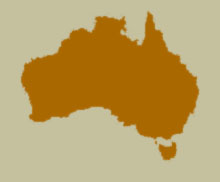Synonyms
Coccinella chalybea Boisduval, 1835: 595.
Diagnosis
This species is characterized by the combination of a distinctly convex body, metallic colour of dorsal surfaces, male having head and anterior corners of pronotum orange or yellowish, and the postcoxal line parallel to the hind margin of the first ventrite. From externally similar species, cupripennis and hilli it can be reliably separated based on male genitalia only.
Description
Length 3.2 - 4.1 mm. Male. Dorsal surface metallic bluish to almost green except for most of the head and anterior corners of pronotum, which are yellowish; venter predominantly dark brown, except antennae, mouthparts, hypomera, mesepimeron, mesepisternum, anterior femora and abdomen which are yellowish; first abdominal ventrite brownish medially. Body round, convex. Head micro reticulate between punctures; punctation about as large as eye facets, nearly 1.5 diameters apart. Eyes dorsally separated by less than 2 times the width of an eye; inner ocular margin slightly diverging apically. Antennomeres 5, 6 and 7 about the same length. Clypeus distinctly emarginate medially, with lateral extension markedly narrow. Terminal maxillary palpomere with sides nearly parallel; terminal labial palpomere somewhat conical; less than 2 times longer than basal width; about as long as the preceding segment. Pronotal surface polished between punctures; punctation smaller than eye facets, shallow and sparse, approximately 2 to 3 diameters apart, obsolete on anterior angles; lateral borders broadly rounded to somewhat truncate; prosternum short in from of coxae, about as long as prosternal process widest width. Elytra surface polished between punctures; punctation stronger than on pronotum, about as large as to larger than eye facets, slightly deeper and more concentrated; lateral margin slightly reflexed. Abdomen with ventrite 6 conspicuous, shortly emarginate at apex; surface of f ventrite 1 polished between postcoxal lines; postcoxal line not recurving apically, running parallel to posterior margin for short distance.
Male
Tegmen relatively long, about 3/4 the abdomen length; penis guide symmetrical, slightly longer than parameres; parameres densely setose at apex, the setae long; strut as long as tegmen; penis as illustrated.
Female
Female similar to male but monochromatic and with abdominal ventrite 6 rounded, slightly pointed at apex.
Variation
There is a considerable colour variation on dorsal surfaces from dark bluish to almost green with interspaces between punctures mostly polished but sometimes showing some degree of cuticular reticulation as in H. hilli. Head in males is always bicoloured with upper surface darker but the extent of darkness varying from upper 1/5 to half the length of the head. There is also some clinal variation in male genitalia with the apical part of penis guide becoming narrower (Fig. 116) in specimens from northern Queensland as compared to a stouter penis (Fig. 115) in NSW and southern Queensland specimens.
 Distribution and Biology
Distribution and Biology
Widely distributed along the eastern coast from Victoria, New South Wales to northern Queensland; introduced to New Zealand, California and Hawaii. Feeds on several different species of scale insects, including Anoidiella aurantii, Coccus viridis, Spodoptera mauritia, Parasaissetia oleae, Saissetia oleae, Icerya spp. and Pulvinaria spp.
Species References
Boisduval, J.B.A. 1835. Voyage de Découvertes de l'Astrolabe. Exécuté par ordre du Roi, Pendant les Années 1826-1827-1828-1829, sous le Commandement de M. J. Dumont d'Urville. Faune Entomologique de l'Océan Pacifique, avec l'illustration des Insectes Nouveaux Recueillis Pendant le voyage, Deuxième Partie. Coléoptères et autres ordres. J. Tastu, Paris, viii + 716 pp.
Slipinski, S.A. 2007. Australian Ladybird Beetles (Coleoptera: Coccinellidae) their biology and classification. ABRS, Canberra. 286 pp.
Slipinski, A. and Giorgi, J.A. 2006. Revision of the Australian Coccinellidae (Coccinellidae). Part 6. Tribe Chilocorini. Annales Zoologici (Warszawa), 56(2): 265-304.
[ Top ]
